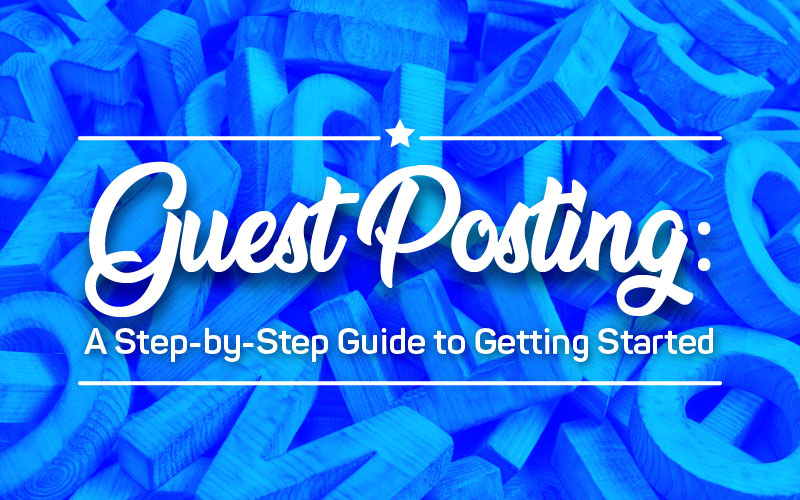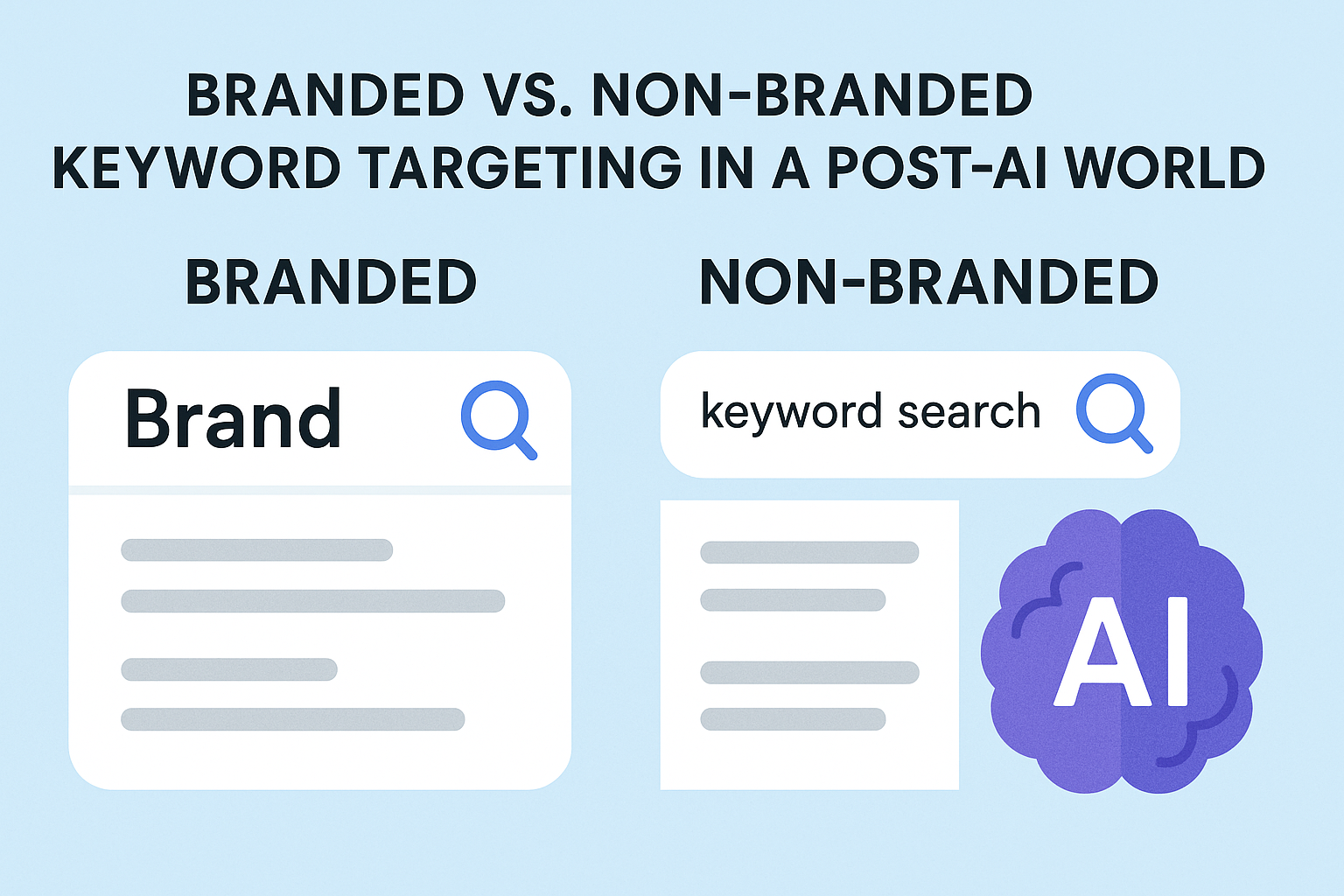If you want to start guest posting but don’t know where to begin, this is the guide for you. Learn how guest posting can benefit your brand, plus eight important steps for setting up a plan that supports your marketing initiatives, expand your brand reach, and connects with new customers.
What Is Guest Posting?
Guest posting is the act of contributing content to another person or brand’s website or blog.
This tactic is also known as guest blogging.
In the guest posting, a writer or an expert acts as a contributor or guest author and submits content to a publisher. The writer or an expert provides content to a site that doesn’t belong to them or any of their organizations in an attempt to support their marketing, PR, and SEO initiatives.
Here is a guest blog post example on the Search Engine Cage blog. Brad Shorr, the writer, submitted a guest post to us, the publisher.

What Are the Benefits of Guest Blogging?
Guest blogging works well as a marketing tactic because it’s symbiotic. It benefits both publishers and writers.
When the content is relevant, valuable, and high-quality, publishers get fresh content that their audience can enjoy and appreciate.
There are many potential benefits of guest blogging for writers:
- Builds brand awareness
- Builds relationships
- Boosts authority
- Reaches new audiences
- Drives traffic to their website
- Builds backlinks that boost site SEO
- Grows their email list
- Grows social media following
How to Execute a Guest Posting Strategy in Eight Steps
Building a successful guest posting strategy includes several important steps. These steps help you set a good foundation for your plan, setting clear goals, expectations, and standards for deciding which opportunities are best for you.
The rest of this post will teach you how to:
- Determine your guest posting goals
- Find guest post opportunities
- Qualify guest posting sites
- Develop blog post topics
- Create the perfect pitch
- Write a post worth publishing
- Follow up on your work
- Track your results
Step 1: Determine Your Guest Posting Goals
As with all good marketing strategies, a smart guest posting strategy starts with outlining your goals. Knowing what results you want to see from your work will help you create a clear road map for getting there.
Consider what can be accomplished through guest blogging and determine which two or three goals align best with your marketing objectives.
- Increase brand awareness – Get more people to know about you and your brand.
- Introduce your projects and services – Get more people to know about what you offer.
- Show audiences how you can help – Get more people to see how your expertise, products, or services can solve problems.
- Improve visibility on social media – Get more people to follow and engage with you or your brand on social media.
- Boost SEO – Get high-quality backlinks to support your off-page SEO strategy.
- Build industry authority – Share your expertise to get people to see you as an expert in your industry.
- Increase traffic – Drive more traffic to your website through referral traffic.
- Increase leads – Generate more leads by reaching new audiences.
When you know what you want your guest posting to accomplish, it will be easier to identify the best guest blogging opportunities. Always prioritize sites that will help you get closer to your goals.
For example, if your goal were to increase traffic, you wouldn’t want to spend time guest posting on a small, niche site that has very low traffic. But if your goal is to build industry authority, you may benefit from writing for a small, industry-specific blog.
Step 2: Find Guest Post Opportunities
If you aren’t sure how to find guest posting sites, use these three tactics.
1. Find sites that interest your audience.
Start by looking for sites that attract and interest your audience. If you aren’t sure what your audience is interested in, use a buyer persona template to create a profile of your ideal customer. Also, use keyword research tools to discover what topics your audience cares about.
2. Find sites similar to your ideal guest posting sites.
When you know the sites your audience uses most frequently, you can use this information to find other related sites.
Enter the URL of a site you know your audience visits in the SemRush Traffic Analytics tool. The tool will provide a list of other sites that have an audience that is similar to the target site.
For example, if you’d love to guest post on Buffer.com, enter that site into the SemRush Traffic Analytics Tool. You’ll get a list of sites that have an audience similar to Buffer which may also make for good guest posting opportunities.
3. Find where your competitors post.
Another way to find guest posting sites is to look at what sites already link to your competitors. If a site already links to your competitor, it is likely that they will link to your site as well.
To find competitor backlinks, enter a competitor’s URL into SemRush Backlink Analytics. The report shows the sites already linking to one or more of the listed competitors.
Not only can you see what content popular sites prefer to link to, you may come across guest posts as well. This is a sign the linking site could be a good guest blogging option for your brand as well.
Step 3: Qualify Guest Posting Sites
Once you have a list of potential guest posting sites, start qualifying them. Look for blogs that accept guest posts, but are also a good fit for your strategy and goals.
Create a set of criteria that aligns with your goals and guidelines for guest blogging. Look for sites that:
- Have the target audience you want to reach
- Have the size of the audience you want to reach
- Drive a certain amount of traffic
- Have strong authority in search
Step 4: Develop Blog Ideas
Once you find a site that fits your guest posting criteria, it’s time to develop blog ideas. Brainstorm a few ideas for posts that will support your goals while also serving the wants and needs of the publisher and their readers.
Make sure it’s a fit for their readers.
Consider the audience of the publisher and develop topics that align with their interests. Develop topic ideas that tie into the site’s most popular categories.
Look for content needs and gaps.
You don’t want to pitch topics that have already been covered on a blog. Ideally, you’ll pitch ideas that fill content needs and gaps. Review the site and identify topics that would be a good fit for the site but haven’t been covered yet.
Make sure the topic connects to you and your goals.
While you want to make sure that your topic fits the site and serves the publisher’s audience, keep in mind that it needs to serve your interests as well. Choose topics that will allow you to promote your interests, refer back to your industry, and connect with your ideal audience.
Step 5: Create a Guest Post Pitch
Guest blogging isn’t as easy as submitting a guest post and having a publisher run it on their blog. Before your content can be considered for publishing, you first have to catch the attention of the publisher by pitching your post.
To craft a guest post pitch that will get noticed:
- Find the right person to contact. Don’t go right to the general contact page of a site. See if you can find the name of the editor or blog manager, seek out their contact information, and reach out to them directly.
- Look for and read the site’s guest posting guidelines. Before you pitch, look to see if there are any requirements for guest posting. Don’t waste your time (or the publisher’s time) pitching posts that have no chance of being accepted.
- Create a compelling subject line. It’s likely that you aren’t the only one pitching the publisher, so you need to stand out in their inbox. Write a subject line that is interesting and eye-catching instead of something vague and stale like “Guest Post Submission.”
- Be personal, not promotional. You may be sending out dozens of guest post pitches, but that doesn’t mean you should copy and paste the same message to every publisher. Write your outreach email as though you are writing a one-to-one correspondence.
- Lead with benefits. Tell the publisher what they’ll get out of the deal. Highlight the benefits of publishing your post by sharing what their readers will gain and how the post will serve their site. (Make your posts stand out even more by including a screenshot of the Competitor Keyword Matrix to show that you’ve done your research and your post will fill a content gap on their site.)
- Add proof of your quality and value. Include links to other guest posts you’ve written, your social metrics, and more to show the publisher what you can bring to the table and why they should work with you.
Step 6: Write a Post Worth Publishing
Once your pitch is accepted, you still have to write a post that the publisher wants to publish on their site. Publishers will be more likely to publish your post and work with you again if you can deliver on your content.
Submit a guest post they will love by following these best practices.
- Follow guidelines. First things first, ask for guest posting guidelines and editorial standards (if they aren’t provided) and follow them.
- Don’t be overly promotional. Even if your goal for guest posting is to promote your products and services, remember that most publishers won’t accept overly promotional posts.
- Add value. Rather than be overly promotional, focus on adding value. By giving readers something they can take away, you serve them while increasing the chances that the publisher will publish your post.
- Proofread. Repeat. Don’t leave it up to publishers to make your post worthy of publishing. Go through a few rounds of editing and proofreading to ensure that it is clean and professionally written.
- If possible, link a page on your site in the blog post. Most publishers have guidelines on linking in guest posts. Follow them, and if you are permitted, include a link to a piece of content on your site. This helps to drive relevant traffic back to your site while supporting off-page SEO.
- Write a bio that welcomes readers to learn more. Another way to drive readers back to your site is through your author bio. Include a link back to your site (if allowed) and include a call to action to drive readers to want to click to learn more. Consider using your bio to promote a freebie or opt-in on your site to drive even more traffic.
Step 7: Follow Up
Your work isn’t over once you submit a guest post. If you want to build a good relationship with the publisher and write for them again, follow up after your post is published. Help the publisher promote and manage the post.
- Share your post on social. Engage in blog promotion Share the content with your audience by posting about it on your social streams. When possible, mention or link to the publisher’s brand to show them that you are working to help promote your piece.
- Respond to comments. Keep an eye on the comment section of your post. If people leave messages, follow up in a timely fashion.
- Link to it on your website. Promote the post on your site by either linking to it in a portfolio page or writing a summary of the post with a link to the original on your own blog.
Step 8: Track Your Guest Posting Results
You can’t fully understand what you gain from guest posting unless you track your results. For each guest post, use metrics to track and monitor the marketing ROI of your work.
Create a list of your posts along with the name of the website, the live link, and relevant marketing KPIs. Track metrics that are most relevant to your goals outlined in step one. These metrics may include:
- Amount of referral traffic
- Number of new website visitors
- Number of social shares
- Number of comments
- Changes in SERP placement
- Number of new leads
- Number of brand mentions or links
With these metrics, you can identify sites that helped you reach your goals and sites that missed the mark. This will help you determine which sites you should attempt to guest post on again and those that should be removed from future guest posting plans.
Start Building Your Guest Posting Plan
Now you know how guest posting can support your marketing, PR, and SEO initiatives. You also know eight steps you can take to plan and execute your strategy.
Put this information to use and start building a guest blogging plan that will increase your brand awareness, generate leads, and drive more organic traffic to your site.

The Search Engine Cage team is on a mission to educate entrepreneurs. We make things easier for the small business owner, by writing articles that help them to understand SEO and Digital Marketing.







